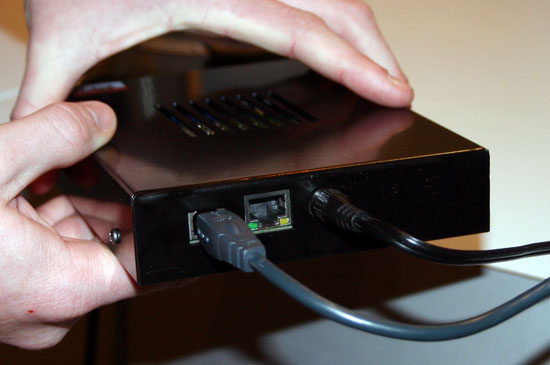ATI's OCUR Brings CableCard and HDTV Support to Windows Vista
by Anand Lal Shimpi on January 5, 2006 6:00 AM EST- Posted in
- Trade Shows
Introducing ATI's OCUR
Although their GPU teams have gone through their ups and downs, the one group at ATI that has consistently done well is their multimedia team. While they have always been quite competitive in the PC multimedia space, nothing is even remotely close to what they are showing off at this year's CES.
At the show ATI is demonstrating the world's first and only CableCard HDTV tuner for PCs, and we were fortunate enough to get a hands-on demo of it.
Currently called ATI's OCUR (Open Cable Uni-directional Receiver), the CableCard tuner is presently only a technology demo, with the final product shipping alongside Windows Vista sometime in 2006 (Microsoft is officially saying "Holiday Season 2006"). Despite the early nature of the product, the reference design is done and simply waiting for Microsoft to ship their OS.
The first versions of the OCUR will be provided exclusively to OEMs and not for retail sale, but ATI will eventually release a product directly to consumers. ATI is currently the only manufacturer to have a ready and certified reference design, and they do say that it is possible that they will be the only one at launch.

Windows Vista with CableCard support - running on a laptop
Currently there are two versions of the OCUR design, one external and one internal, but both offer the same functionality. The external box is obviously no where near polished, but the internals of the design are complete.

The way it works is simple: you connect a coaxial cable to the front of the OCUR, plug in your CableCard and run a USB cable from the back of the unit to your Windows Vista PC. To your PC, it appears to be nothing more than a regular tuner, except that it can now tune all channels - analog channels as well as premium HD content. Note that the tuner only supports CableCard 1.0, but with Vista you'll have your own EPG (Electronic Programming Guide) so you really only lose out on on-demand and pay-per-view functionality. The pros definitely outweigh the cons though, as you'll be able to finally have a PC based HD-DVR.

The internal version of ATI's OCUR
It's worth noting that both the internal and external versions use USB 2.0 to interface to your PC. The internal version will either have an external USB port you can connect (externally) to your PC, or it will have an internal connection that you can run to your motherboard's 4-pin USB header. The output of the tuner is at maximum a 19.2Mbps signal, so USB 2.0 is more than enough to carry it.

You'll also notice an Ethernet port at the back of the box we were shown, however that won't be in the final design. ATI will eventually bring a design to market that will work over Ethernet and not just USB. An Ethernet design could potentially mean that the tuner wouldn't be tied to a single PC but accessible by any PC on the same network (obviously only one machine could access it at a time).
Inside the tuner are two pieces of ATI silicon - a Theater 550 and a NXT 2003, the combination of which handle all of the tuning and demodulation on the device. There is a FPGA in the device that along with some other custom silicon handles all decryption from the original broadcasted signal as well as encryption before handing the content off to the USB controller for transmission to the PC.










41 Comments
View All Comments
tuteja1986 - Thursday, January 5, 2006 - link
Me want one but i wonder how will it cost and should go along with my xbox 360 :)